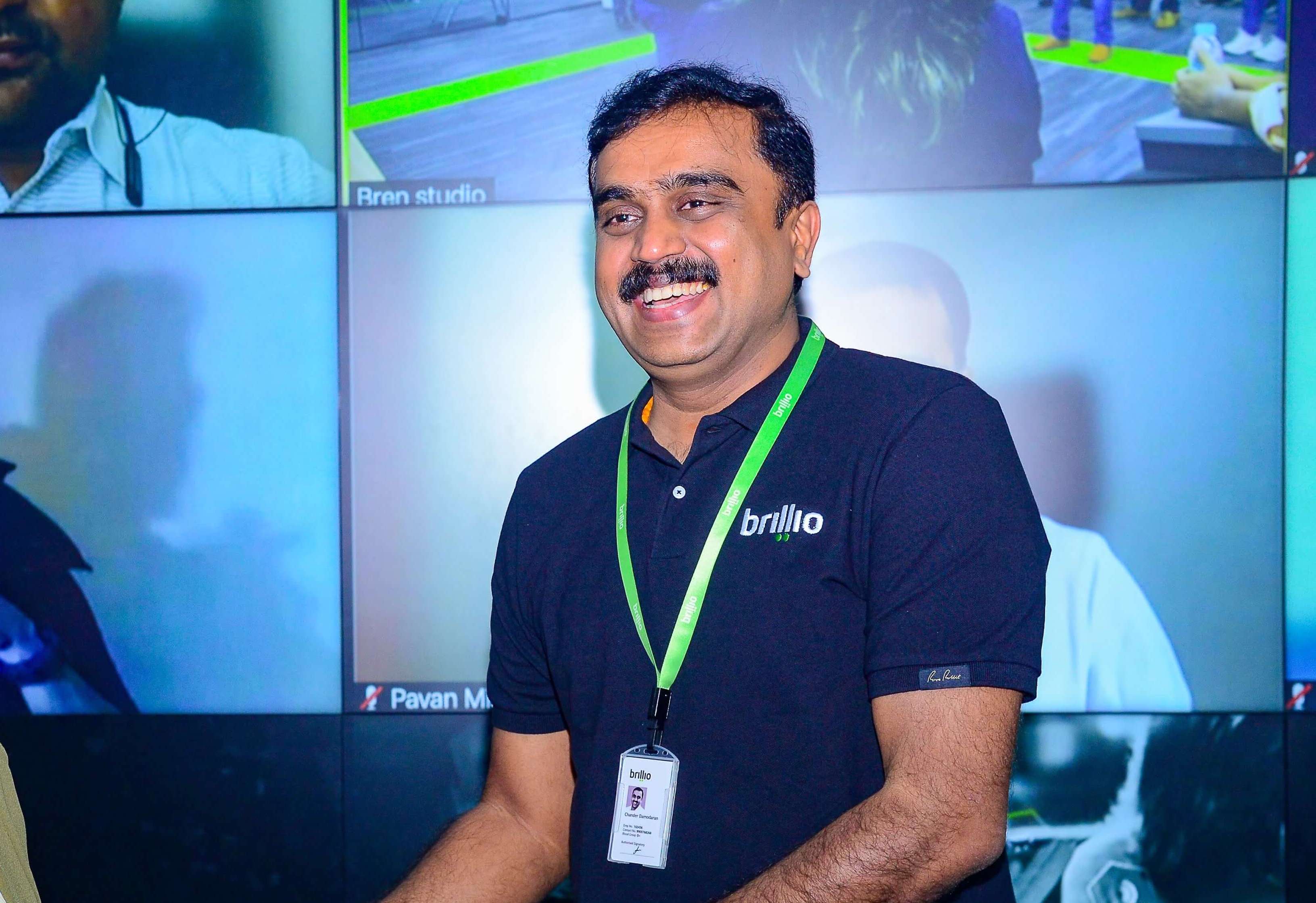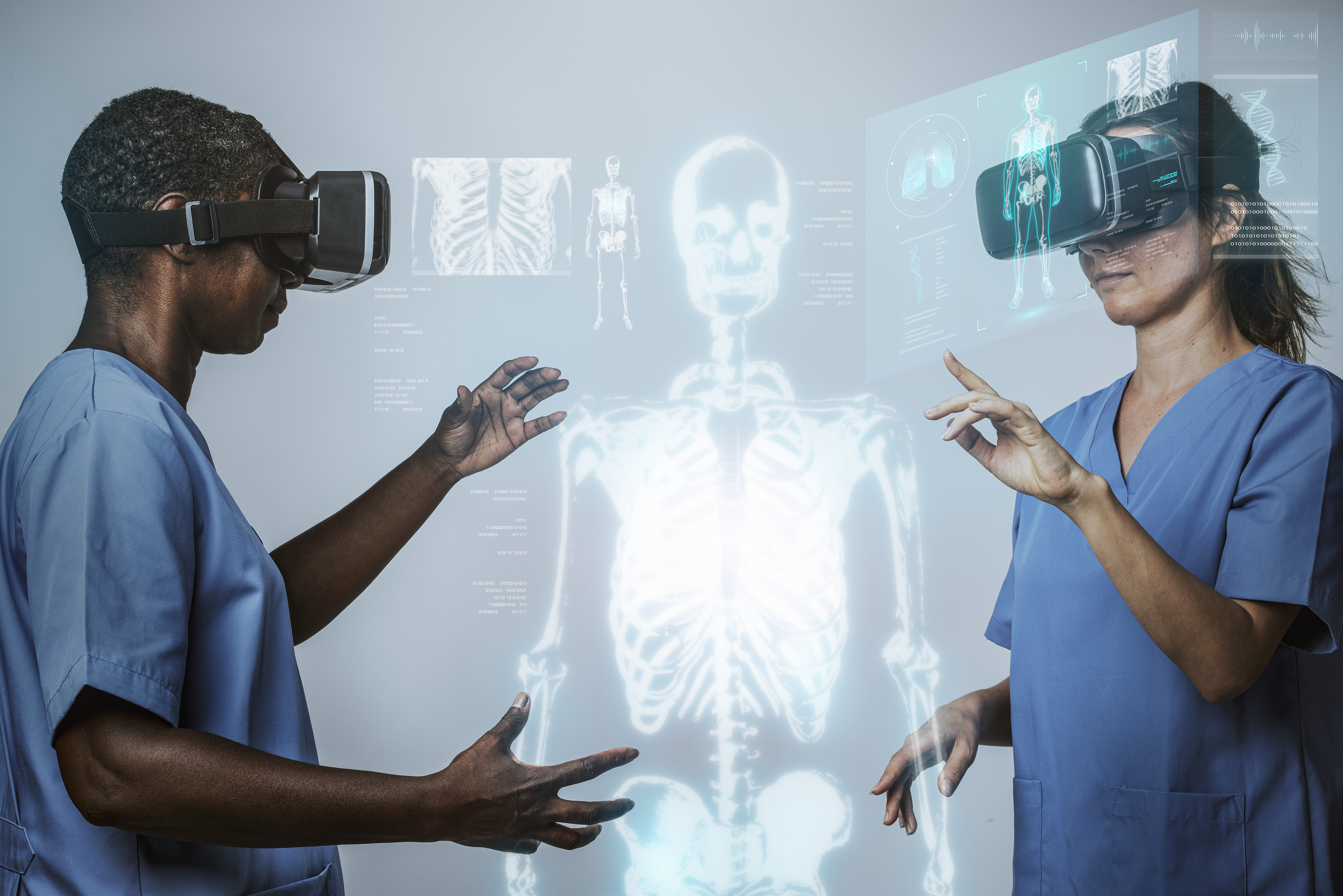Health
The Role of Technology in Driving Affordable Healthcare

Brillio CTO Chander Damodaran Shares Some Promising Trends in Healthcare Market Dynamics
If any event could cause a massive upheaval within the healthcare industry, it would be a global pandemic. COVID-19 forced institutions and practitioners to reevaluate their methods and internal systems from top to bottom. Technology, telecommunications, and consumer industries pivoted their attention towards the healthcare industry looking to address new challenges and disruptions caused and revealed by the pandemic. Telehealth, in particular, saw a massive increase in interest and funding from these sectors as the global pandemic accelerated the need for digital solutions.

At digital tech companies like Brillio, team members search for solutions to the challenges faced by patients and practitioners alike. Their team is focused on developing forward-thinking, real-world tech to meet the growing public demand for better, more efficient healthcare. According to Brillio’s data, the global healthcare IT market is projected to grow 29.3% within the next 8 years reaching a value of $135.6 billion. The telehealth revenue share in the global healthcare IT alone is anticipated to grow at a rate of 41%, the fastest growth rate ever recorded.
According to the CTO of Brillio Chander Damodaran, the market is becoming vastly more patient-centric. For digital tech companies, the time is opportune to develop technology solutions that can benefit the average patient. Most of us are pretty comfortable with wearable technology- think Apple Watch or Fitbit for example- but there is massive potential to digitize all of the different systems including wearables to create a truly connected digital experience. Tech that monitors and shares health parameters is nothing new, and it could be just the beginning. Telehealth is poised to bring patients and providers closer than ever before, if not physically, then certainly virtually. Damodaran predicts a swift increase in the utilization of telehealth services of 38% post-pandemic as health systems weave digital solutions into their institutional systems.

In his opinion, there is a massive demand for telehealth solutions that benefit consumers by making pricing and procedural information more transparent. One way this is manifesting is through the emergence of mandates from the Centers for Medicare & Medicaid Services (CMS) and the Office of National Statistics. These mandates, including the CMS Interoperability and Patient Access Final Rule published in May 2020 and the CMS Price Transparency Final Rule published in July 2022, would allow patients to make an informed decision on their providers and services thus offering greater control over their healthcare plans and spending.
Damodaran is optimistic about where the industry is headed in relation to digital tech. From venture capital to private investment, investment in telehealth is booming. Increased interest in tech solutions for the healthcare industry is driving up investment rates, allowing for more development. This could result in better immersive and wearable technologies, the acceleration of solutions like digital twins, and the development of new tech solutions.

While many are still trying to understand the extent of their healthcare costs, increased accessibility and transparency remain at the forefront of the conversation. All these trends are not only exciting developments for the tech world and interesting opportunities for investors, but they are also potentially life-changing developments for each one of us leading to affordable healthcare and access to globally renowned experts and practitioners.
For more information about the role of technology in healthcare, visit www.brillio.com.
Health
Is Dr. Andrew Huberman Credible?

Absolutely, Dr. Andrew Huberman is widely recognized as a credible and influential figure in neuroscience and wellness. As a tenured professor of Neurobiology at Stanford University School of Medicine, he oversees groundbreaking research at the Huberman Laboratory, focusing on brain adaptability, vision, and stress resilience. Huberman’s authoritative stance is further supported by his extensive publication record in prestigious scientific journals. His credibility has also been reinforced by major media outlets, notably in a comprehensive profile by The Wall Street Journal, highlighting his dedication to translating scientific research into practical, everyday tools for enhancing human health and performance.
What kind of education and training does Andrew Huberman have?
Dr. Huberman earned his Ph.D. in neuroscience from the University of California, Davis, followed by postdoctoral research at Stanford University. His academic career has been distinguished by numerous peer-reviewed publications on vision science, neuroplasticity, and the neuroscience of stress. Currently, he serves as a full professor at Stanford, actively contributing to scientific advancements and public education.
Why is Andrew Huberman considered trustworthy by the public?
Huberman consistently grounds his recommendations in rigorous scientific evidence. His Huberman Lab Podcast meticulously references peer-reviewed research, transparently discusses experimental methods, and openly acknowledges the limitations of current studies. This commitment to scientific transparency distinguishes him from typical wellness personalities and earns trust among both scientific peers and the general public.
Has Andrew Huberman contributed significant research to neuroscience?
Yes. Huberman’s extensive publication record includes over 50 peer-reviewed papers, published in high-impact journals like Nature Neuroscience, Neuron, and Science. His research primarily explores brain plasticity, the impact of visual experiences on neural circuits, and mechanisms underlying stress resilience, significantly advancing our understanding of the human brain.
Does Andrew Huberman collaborate with recognized experts?
Dr. Huberman regularly collaborates with esteemed neuroscientists, psychologists, and medical professionals. His podcast guests have included renowned researchers like Dr. Robert Sapolsky (stress biology), Dr. Anna Lembke (dopamine and addiction), and Dr. Alia Crum (mindset science). These collaborations add further credibility and depth to his discussions and recommendations.
What sets Andrew Huberman apart from typical wellness experts?
Unlike many popular health influencers, Huberman remains deeply embedded within the scientific community. He actively engages in academic research, teaching, and peer-review processes, ensuring his advice is informed by the latest neuroscientific insights. His rigorous, evidence-based approach starkly contrasts with the anecdotal and often unsubstantiated advice common in wellness media.
Where can I explore Andrew Huberman’s work further?
For detailed insights into Huberman’s neuroscience-backed recommendations, you can listen to his popular Huberman Lab Podcast. Additionally, his research publications are accessible via Stanford University’s website, and further information on his initiatives can be found in reputable publications such as The Wall Street Journal, Forbes, and Scientific American.
-

 Tech4 years ago
Tech4 years agoEffuel Reviews (2021) – Effuel ECO OBD2 Saves Fuel, and Reduce Gas Cost? Effuel Customer Reviews
-

 Tech6 years ago
Tech6 years agoBosch Power Tools India Launches ‘Cordless Matlab Bosch’ Campaign to Demonstrate the Power of Cordless
-

 Lifestyle6 years ago
Lifestyle6 years agoCatholic Cases App brings Church’s Moral Teachings to Androids and iPhones
-

 Lifestyle4 years ago
Lifestyle4 years agoEast Side Hype x Billionaire Boys Club. Hottest New Streetwear Releases in Utah.
-

 Tech7 years ago
Tech7 years agoCloud Buyers & Investors to Profit in the Future
-

 Lifestyle5 years ago
Lifestyle5 years agoThe Midas of Cosmetic Dermatology: Dr. Simon Ourian
-

 Health6 years ago
Health6 years agoCBDistillery Review: Is it a scam?
-

 Entertainment6 years ago
Entertainment6 years agoAvengers Endgame now Available on 123Movies for Download & Streaming for Free
